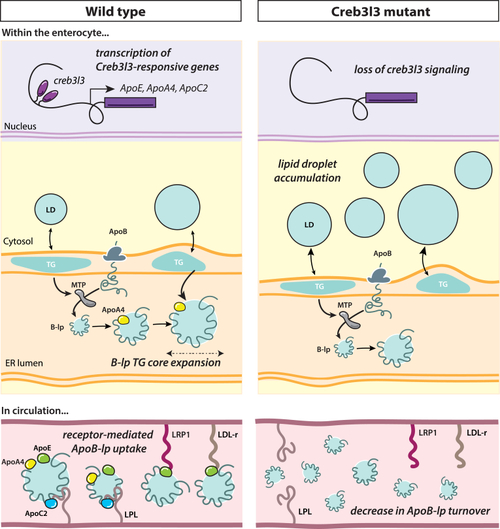Fig. 9
|
Summary of results and hypothetical model. Creb3l3 signaling activates Creb3l3-responsive genes such as ApoC2, ApoE, and ApoA4. We found that loss of Creb3l3 results in an increase of cytoplasmic lipid droplets in the enterocytes likely due to the loss of ApoA4. It is speculated that ApoA4 is responsible for expanding the size of the ApoB-lp through the addition of triglyceride potentially in poorly understood post ER steps. If enterocytes are unable to enlarge particles, the enterocyte may be directing excess lipid to cytoplasmic lipid droplets for storage. In circulation, ApoE facilitates the uptake of B-lp by peripheral tissues. In our study, we hypothesize that the increase of ApoB-lp half-life, or decrease of ApoB-lp turnover, is a direct result of the loss of ApoE from the ApoB-lp particle. ApoB-lp, apolipoprotein-B–containing lipoprotein; B-lp, ApoB-containing lipoprotein; Creb3l3, cAMP-responsive element-binding protein 3–like 3; ER, endoplasmic reticulum; LDL-r and LRP1, members low-density lipoprotein receptor family; LPL, lipoprotein lipase; MTP, microsomal triglyceride transfer protein; TG, triglyceride. |

